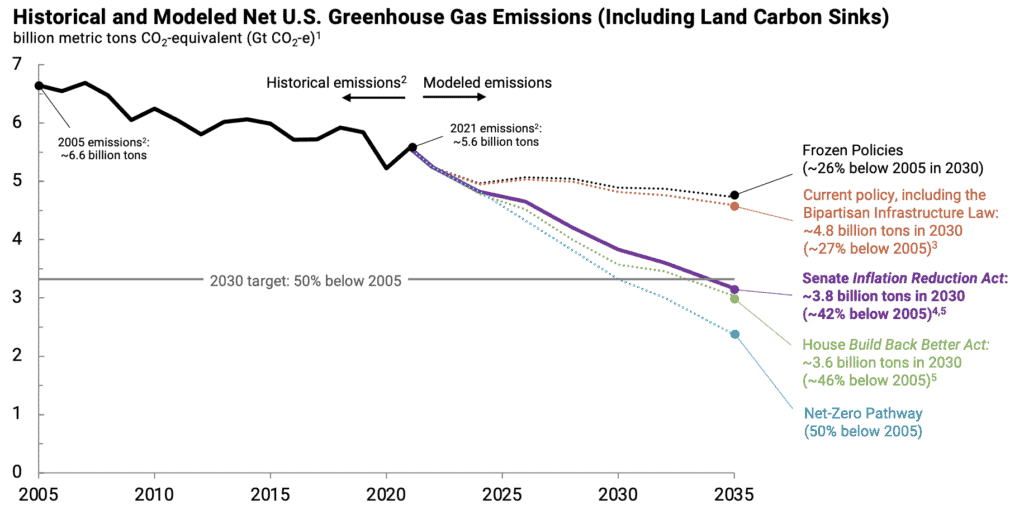Cause for optimism – Inflation Reduction Act of 2022
Recent news from US Congress sparks a note of optimism among us who have been advocating for more aggressive action toward reducing carbon as per the IPCC limit. The New York Times covered the story and noted that Biden’s Inflation Reduction Act, who provides tax credits for green technologies and requirements regarding methane emissions, put the US on track for greater reduction in carbon emissions. Against the background of the enormous amount we need to reduce, the effect is in the right direction and welcomed, though doesn’t reassure us that we’re going to hit our goals.

840 gigatons – a budget carbon for humanity until 2 degree Celsius warming
In this post, I’m going to try and explain the global carbon budget. The Intergovernmental Panel on Climate Change presented a budget to keep warming on the planet under two degrees Celsius. At its simplest, the carbon budget means that we need to keep total human emissions of carbon below 840 gigatonnes of carbon. So I’m going to make a lego analogy below with blocks, and I want you to imagine that these blocks are the 840 gigatons that the IPCC says we can emit into the atmosphere before crossing the two-degree threshold.
All the data discussed is in terms of gigatonnes of carbon (GtC). For a more complete analysis of the budget see our 22 years till we blow the 2C carbon budget post. This explains why we are on track to burn straight through the IPCC’s carbon budget in coming decades.

530 gigatons are already spent, 310 gigatons remain
Unfortunately, we’ve already emitted 530 of the 840 gigatons of greenhouse gases. I’m going to try and explain where that went.
- Red, 175 gigatons – carbon dioxide emitted from burning coal and biomass.
- Orange, 130 gigatons – carbon dioxide emitted from burning oil.
- Yellow, 50 gigatons – carbon dioxide emitted from natural gas release, cement production and flaring.
- Green, 160 gigatons – land-use emissions, mostly deforestation.
- Blue, 310 gigatons – Earth’s remaining carbon budget before hitting a state of warming by 2 degrees Celsius. There is disagreement about what happens in this state. Some scientists believe the impact on the environment becomes “irreversible” for example melting ice caps, glaciers.
We are on track to spend the remaining 310 gigatons by 2035
At the current rate, if nothing is done to reduce growth of carbon emissions, this budget will be used up by 2035. To avoid exhausting this budget before the end of the century, we need to reduce annual carbon emissions globally by 4 percent per annum. We essentially need to find a way to live without fossil fuels or capture the CO2 they emit.
Unless we begin sharp reductions in carbon emissions immediately, we will commit the world to more that two degrees of warming.
Finally it is worth pointing out that it can be a little dangerous to think that we still have carbon to spend. In terms of ocean acidification and feedback risks, we have already emitted too much. Given that we need to combine fast emission cuts with rising energy use globally, we need to be focused on substituting away from any process that emits carbon into the atmosphere.
Lindsay Wilson
I founded Shrink That Footprint in November 2012, after a long period of research. For many years I have calculated, studied and worked with carbon footprints, and Shrink That Footprint is that interest come to life.
I have an Economics degree from UCL, have previously worked as an energy efficiency analyst at BNEF and continue to work as a strategy consultant at Maneas. I have consulted to numerous clients in energy and finance, as well as the World Economic Forum.
When I’m not crunching carbon footprints you’ll often find me helping my two year old son tend to the tomatoes, salad and peppers growing in our upcycled greenhouse.
